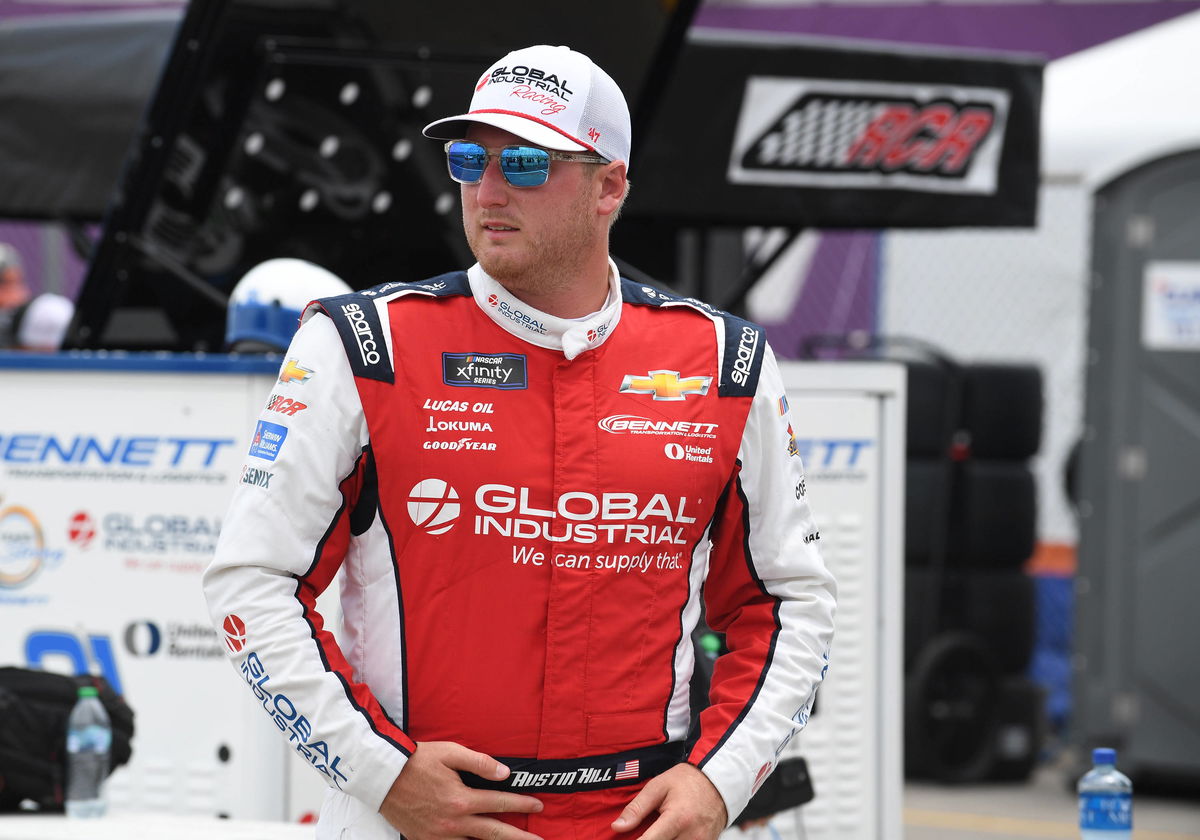Did NASCAR Insider Just Clear Austin Hill of Wrongdoing at Watkins Glen?

Austin Hill's NASCAR Xfinity Series Return: High Stakes and Heavy Consequences
The NASCAR Xfinity Series is no stranger to drama, but Austin Hill's recent return at Watkins Glen has taken the spotlight for all the wrong reasons. Fresh from a one-race suspension following a controversial right rear hook incident at Indianapolis, Hill quickly found himself embroiled in yet another significant collision—a 16-car pile-up ignited by contact with fellow driver Michael McDowell. While the incident drew immediate scrutiny, NASCAR officials deemed it a racing incident without malicious intent, leaving fans and analysts divided on Hill's aggressive driving style. This article delves deep into the complexities of Hill’s racing persona, the reactions from fellow drivers, and the implications for his future in the sport.
The Incident at Watkins Glen
Coming off his suspension, Hill's return was anything but quiet. The high-profile incident unfolded when he misjudged a merge exiting Turn 5, resulting in a collision with McDowell that sent the latter crashing into the Armco barrier. This collision was not just a momentary lapse in judgment; it ignited a massive pile-up involving 16 cars, prompting a red flag and halting the race. The aftermath of the collision saw McDowell expressing his view that the contact was aggressive yet unintentional, stating that Hill had no room to complete the pass and chose not to lift off the throttle.
As the dust settled, NASCAR's senior VP of competition, Elton Sawyer, reviewed telemetry and video footage of the incident. He ultimately ruled that no additional sanctions were warranted. According to Sawyer, while both drivers made poor decisions, the incident did not cross the line into malicious intent. The distinction is crucial in the world of NASCAR, where the line between aggressive racing and reckless driving can often appear blurred.
Austin Hill’s Driving Style: Hard Racing or Reckless Aggression?
Hill's reputation as a hard racer is well-known in the NASCAR community. However, the thin line between hard racing and reckless aggression often comes into question. Following the Indianapolis incident, where Hill was penalized for an aggressive right rear hook on Aric Almirola, it became evident that NASCAR was keeping a close watch on his driving behavior. The recent incident at Watkins Glen only adds to the narrative of Hill as a driver who often walks the tightrope of aggressive racing.
NASCAR insider Mike Ford categorized drivers based on their racing styles during a recent episode of Hauler Talks. He noted that while some drivers, like Austin Cindric and Bubba Wallace, may engage in aggressive racing, others, including Hill and Connor Zilisch, often find themselves in different "buckets." Ford explained that Hill's recent actions at Watkins Glen fall into a category of "hard racing with poorly timed moves," a classification that could have longer-term implications for Hill’s career if the incidents continue.
Contrasting Styles: Austin Hill vs. Connor Zilisch
In the world of NASCAR, the competition is fierce, especially among rookies. Connor Zilisch, who recently celebrated back-to-back road course victories, has carved out a reputation for calculated aggression. His racing style is marked by a fierce yet measured approach, allowing him to navigate high-stakes scenarios effectively. On the other hand, Hill’s return from suspension has raised questions about his judgment under pressure. While both drivers are competitive, their approaches to racing differ significantly, with Zilisch focusing on execution and Hill often getting entangled in chaos.
Future Implications for Austin Hill and RCR
The upcoming race at Daytona International Speedway will provide an opportunity for Hill to demonstrate whether he can adapt his aggressive style to avoid further penalties or incidents. Known for its high-speed merges and narrow transitions, Daytona is a venue where non-retaliatory hooks can be commonplace. As NASCAR insiders point out, aggressive racing is expected, but how drivers choose to navigate these high-stakes situations will ultimately determine their long-term success.
Dale Earnhardt Jr.'s Perspective on RCR and Austin Hill
Dale Earnhardt Jr., a highly respected figure in the NASCAR community, didn’t hold back in his criticism of Hill and Richard Childress Racing (RCR). He argued that both Hill and the organization appear unwilling to accept responsibility for their actions, instead framing themselves as victims of NASCAR's regulations. According to Junior, this mindset reflects a deeper culture within RCR that is unlikely to change anytime soon.
During a recent episode of his podcast, Junior articulated his concerns about Hill's attitude, stating that instead of coming to Watkins Glen with a sense of humility, Hill seemed ready to "come back swinging" after feeling wronged by NASCAR. This aggressive mindset can be detrimental, especially when it leads to further confrontations on the track.
The Importance of Accountability in Racing
In motorsports, accountability is critical for sustained success. Most teams would typically instruct their drivers to temper their aggression following a significant penalty. However, RCR appears to be taking a different approach, embracing a confrontational style instead. Junior emphasizes that this refusal to accept blame has shaped both Hill’s and RCR's responses in high-stakes situations. As they continue to face scrutiny, the question remains: will they adapt their methods, or will they continue down a path that may ultimately lead to more trouble?
Conclusion
Austin Hill's recent return to the NASCAR Xfinity Series has ignited discussions about aggressive driving, accountability, and the culture within RCR. With a mix of high-stakes racing and controversial incidents, fans are left wondering what the future holds for Hill. As he prepares for the upcoming race at Daytona, the pressure is on to demonstrate that he can navigate the challenges of the sport without further escalating tensions. Will Hill adjust his approach, or will he continue to face penalties and criticism? Only time will tell.
FAQs
What led to Austin Hill's one-race suspension?
Austin Hill received a one-race suspension due to a controversial right rear hook incident involving Aric Almirola during the Pennzoil 250 at Indianapolis Motor Speedway.
How did NASCAR officials classify the pile-up at Watkins Glen?
NASCAR officials ruled the 16-car pile-up as a mirror racing incident, indicating that it was an aggressive move without malicious intent, thus not warranting additional penalties for Austin Hill.
What is the significance of accountability in NASCAR?
Accountability is crucial in NASCAR as it shapes drivers' behavior on the track. Accepting responsibility for aggressive actions can lead to improved performance and better relationships within the racing community.
The world of NASCAR is ever-evolving, and as drivers like Austin Hill continue to make headlines, fans will be watching closely. How will Hill's future unfold in this highly competitive environment? #NASCAR #AustinHill #RacingCulture
Published: 2025-08-15 04:34:34 | Category: Trump GNEWS Search



